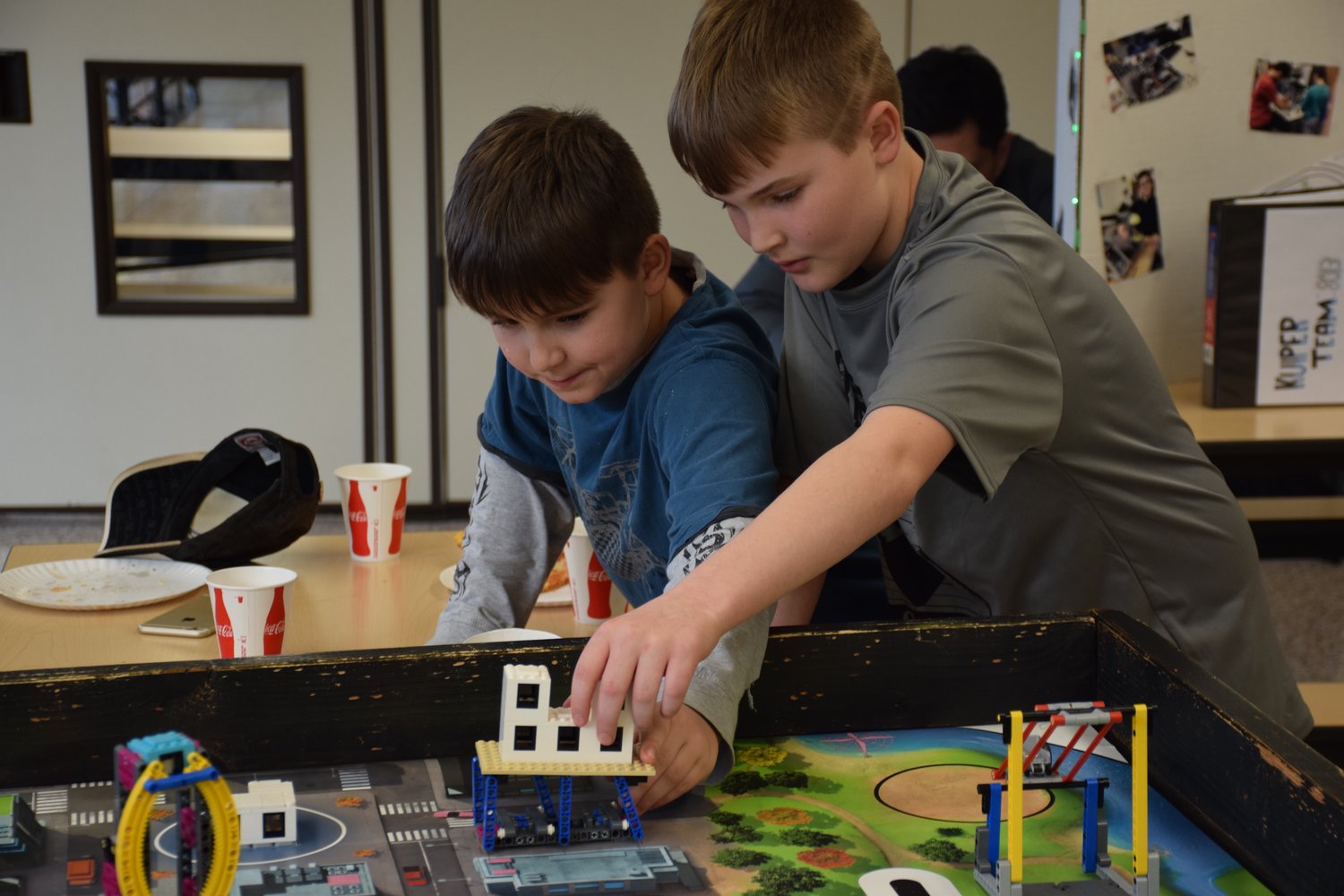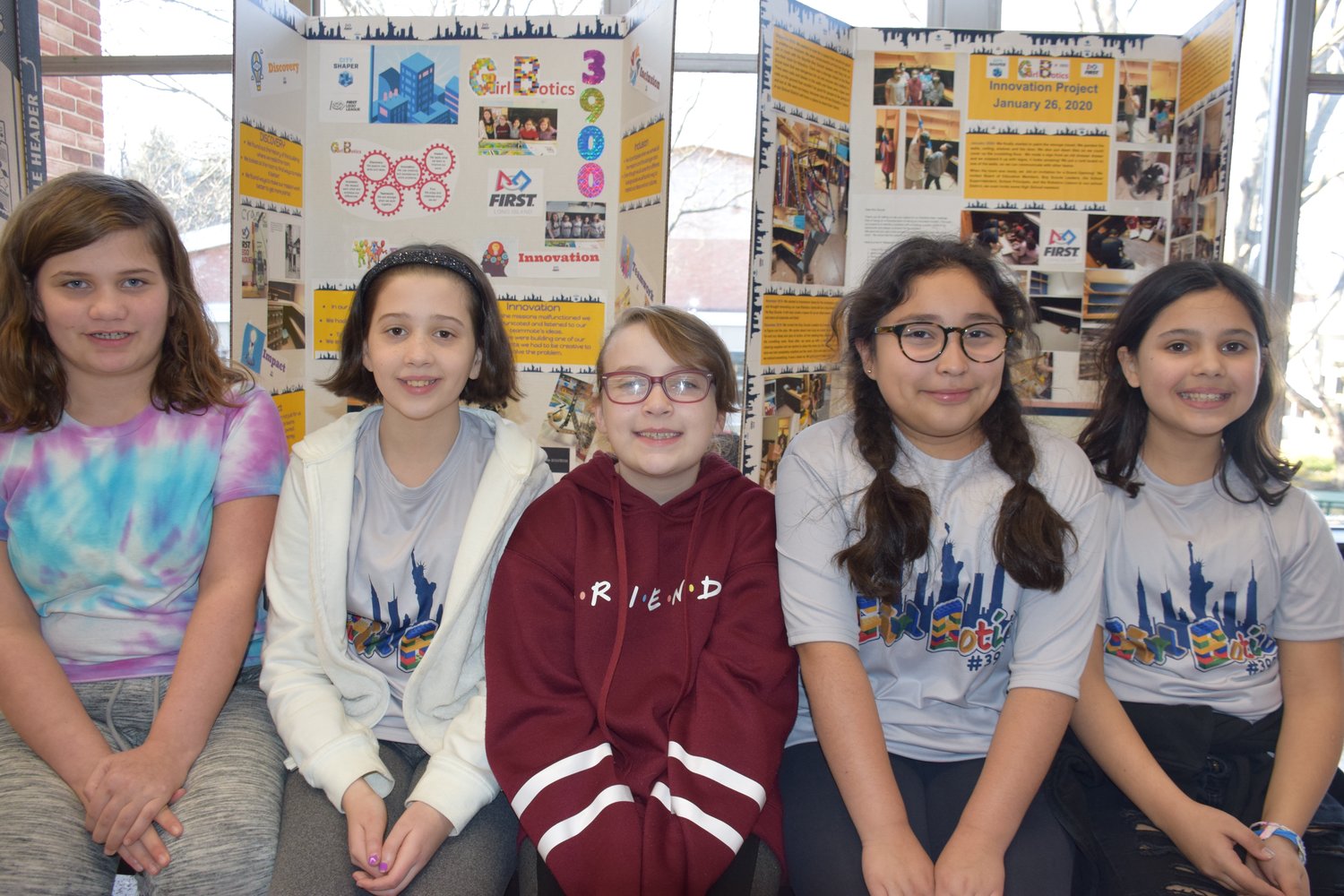Wednesday, May 8, 2024
 76.0°,
Mostly Cloudy
76.0°,
Mostly Cloudy
Lego extravaganza at Robotics Expo
From Lego robotics to the Bayville Bridge
There were several things moving in the Locust Valley Middle School cafeteria, but they weren’t humans. On closer inspection, it became apparent that they were robots — specifically Lego robots, doing their best to push tiny swings, also made of Legos. A crowd of children had gathered in the cafeteria after school on Feb. 27 for the Locust Valley Robotics Expo, to get a closer look.
One of the exactingly assembled collections of moving parts even carried Lego figurines in wheelchairs on swings. It was created by team GirlBotics, five fifth-grade girls. Four members of the team attend Bayville Intermediate School, and one is a student at Locust Valley Intermediate. A month earlier, Madeline Hataier, Mia Dessner, Julia Ergen, Gianna Moreano and Maya Valderrama had competed against 28 other teams at the First Lego League regional competition at Huntington High School, finishing third in the “mission” category.
Their project was one of five that had been made by teams of fifth-graders from the district. The schoolkids gathered to show them off and to check out those created by their classmates. The teams were also there to help younger students prepare for an upcoming presentation of their own.
According to the First Lego League’s website, the international robotics competition “helps students and teachers to build a better future together.” The program, which is built around theme-based challenges, seeks to engage children ages 9 to 16 in research, problem-solving, coding and engineering. This year’s theme is to create a design that will improve communities.
According to the the rules of competition, the robots must perform a number of tasks — like pushing a swing designed for a Lego figurine in a wheelchair, or picking up a Lego boulder and carrying it to another location. The competitors must accomplish the tasks precisely, while demonstrating teamwork.
District kindergartners through sixth-graders have taken part in the Lego program since 2009. The First Lego League regional competition involves fourth- through sixth-graders, while students in kindergarten through third grade participate in the First Lego Junior League. They presented their robot projects to a team of judges last Saturday, at Mineola High School, and Sunday, at Longwood High School. Unlike the older students, however, there was no scoring or competition involved. Nine district teams took part in the junior league.
There was a great deal of camaraderie in the cafeteria, because many of these mechanically minded students already know one another. The older teams had been gathering after school since August to share their projects and help each other prepare for competition.
A team of first- and second-graders known as Team Epic also presented their project, a Lego park and stadium.
“When we built our Lego stadium, we saw a Lego person in a wheelchair in our kit,” said Nicholas Ricciardi, 7, a member of Team Epic. “The wheelchair couldn’t fit through the entrance to our stadium, so we built a Lego elevator and programmed it to go up and down.”
To accomplish that, with the help of their coach Lauren Themis, team members put the program on an iPad and then downloaded it into their elevator. The wheelchair fit inside the elevator, which opened onto a platform designed for those with disabilities at the stadium.
“This is a way to incorporate all the different activities within a city,” explained Alan Stella, the district’s robotics coordinator, “without losing our sense of community.”
Next to Team Epic, another junior league contender, The Convertibles, shared their project, a Lego version of Manhattan. Alison Kelly, 7, pointed out the public library, airport, parking garage, and a robotic elevator that led to a park, a water tower and a homeless shelter.
“Everyone on the team made at least two things,” Alison explained. “Then we put them together.”
In yet another area of the cafeteria, a team of 10- and 11-year-olds, known as Robotic Fire Lazer Falcons, displayed their award-winning project, which involved adding a micro-grid, including tidal energy, to the Lego Bayville Bridge.
“We wanted to do a project around the water since we live near it,” Rowan Shenoy, 11, said.
The Bayville Bridge would soon be renovated, they learned. Rowan said they wanted to come up with a more environmentally friendly way to improve the bridge.
“A micro-grid is one structure which is powered by multiple sources,” Rowan explained, “so we wanted to use solar power, maybe even wind power and turbines, under the water to create enough power for the bridge and surrounding buildings.”
Robotic Fire Lazer Falcons team member spoke to George Baptista, the Town of Oyster Bay’s deputy commissioner of environmental resources, and other authorities. Ultimately, they learned about a system similar to one in operation in the East River in Manhattan. Taking the data they had gathered about the East River, the team scaled their project down to a size that would actually work on the Bayville Bridge. Rowan said that although the project would be expensive to produce in Bayville, if the funds were acquired, it might be a real possibility.
Toward the end of the expo, Stella led the children downstairs to look at robots that had been created by high school students. Stella said he has a broader vision for the students.
“People say, ‘Hey, robotics is all about robots,’ but it’s really much more,” he said. “It’s about the research. It’s about the teamwork. And, of course, it’s about the way the robots perform and how technical problems are solved.”







